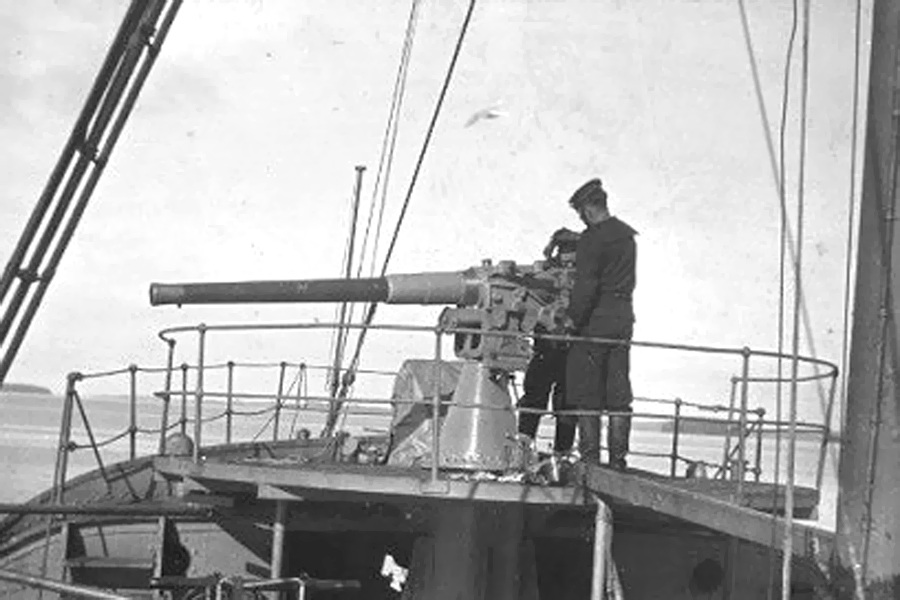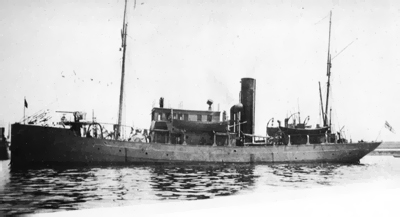Clearance divers review 87-year-old shipwreck
By Lookout on Mar 14, 2017 with Comments 0

Members of Thiepval’s crew maintain the ship’s main armament, a 12-pounder cannon mounted on a platform in the bow. Thiepval’s limited weaponry was sufficient for the ship’s peacetime patrol work. After being transferred to the West Coast from Halifax, Thiepval’s duties included counting seals, patrolling against rum-runners, and ensuring that American fishing boats did not enter Canadian territorial waters. Years after Thiepval’s 1930 sinking, divers raised this gun and placed it on display at nearby Ucluelet, British Columbia. Photo by George Metcalf Archival Collection, Canadian War Museum
Peter Mallett, Staff Writer ~
A team of Fleet Diving Unit (Pacific) clearance divers travelled to the waters off Ucluelet, B.C., last week to begin remediation work on a First World War ship laying on the sea bed.
The wreck of HMCS Thiepval is submerged approximately 15 metres in Parks Canada waters and is believed to contain unexploded ordnance within its cargo.
Following service in the First World War, the 44 meter-long Battle Class Trawler was conducting a routine patrol in Barkley Sound near the Broken Island Group on Feb. 27, 1930, when it struck a rock between Turret and Turtle Islands and sank.
Lieutenant Commander Chad Naefken, Commanding Officer of the dive unit, says the sunken vessel’s close proximity to shore and its easy accessibility to civilian divers has made it necessary for the Canadian Armed Forces to remediate the site. LCdr Naefken says the remediation project has two main aims.
“The protection of our Canadian military heritage, as well as working to safeguard the environment. This is an integral part of our practices at Fleet Diving Unit. Our navy divers continuously demonstrate their ability to effectively keep our marine environment safe for all.”

The HMCS Thiepval was a naval trawler built in 1917, the seventh ship built at the Kingston Shipyards. This class of ship was used for antisubmarine patrols. Photo by Canadian War Museum
From March 6 to 9 a team of five clearance divers and two support staff conducted the first phase of the remediation project, which focussed on information gathering and the creation of a detailed survey of the site, says CPO2 Alexander (Sandy) MacNeish, Operations Chief, Fleet Diving Unit.
After setting up their base camp on shore, members of the team drove to the site in a Rigid Hulled Inflatable boat and used a camera attached to small remote-controlled submersible vehicle to photograph the wreck.
“They are not touching or changing the state of the wreck and there is no recovery work taking place at this time,” said CPO2 MacNeish. “Their sole purpose right now is to determine the precise location and integrity of the wreck, as well as establishing the type and number of unexploded ordnance through visual observations.”
In the coming weeks their detailed report will be presented to Maritime Forces Pacific/Joint Task Force Pacific staff. Clearance Divers are expected to return to the wreck later this summer to complete the removal of ordnance and dispose of it safely.
Filed Under: Top Stories
About the Author:





